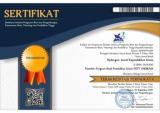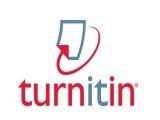Learning Cycle 5E through Interactive Simulator to Improve Understanding of Molecular shapes and Chemistry Identity
Abstract
This study aims to improve students understanding of concepts and chemistry identity in molecular shape material through the application of the learning cycle 5E (LC 5E) model assisted by interactive digital simulator media. The research method used is classroom action research (CAR) with the Kemmis and Taggart model. The model has four stages, namely planning, action, observation, and reflection. The subjects in this study were 32 students from class X-3 SMA Brawijaya Smart School in the 2024/2025 academic year. The data obtained were analyzed descriptively. Based on the results of the study, it is known that in cycle I, the application of LC 5E assisted by interactive digital simulator media has not been able to improve understanding of molecular shapes and the percentage increase in students' chemistry identity is low. Therefore, improvements were made in cycle II referring to the results of the reflection, there was an increase in concept understanding from 68% to 82% with classical completeness reaching 81%. In addition, the n-gain value of 71.8% was obtained, indicating that the application of the LC 5E model assisted by interactive digital simulator media was quite effective in improving students' concept understanding on molecular shape material. There was also an increase in students' chemistry identity, especially related to the indicators of mastery experiences and verbal persuasion, 57% and 50% respectively. Thus, it can be concluded that through the application of the 5E learning cycle model assisted by interactive digital simulator media on the material of molecular shapes is effective enough to improve students' concept understanding and chemistry identity.
Keywords
Full Text:
PDFReferences
Alam, A. (2021). What is the "Philosophy of Chemistry Education"? Viewing Philosophy behind Educational Ideas in Chemistry from John Dewey's Lens: The Curriculum and the Entitlement to Knowledge. SSRN Electronic Journal, 17(9), 6857-6889. https://doi.org/10.2139/ssrn.3771372
Bonache, H., Lorenzo, M., & Rosales, C. (2025). Strategies to optimise active learning and reduce social loafing. Innovations in Education and Teaching International, 00(00), 1-14. https://doi.org/10.1080/14703297.2025.2451788
Brown, C. E., Alrmuny, D., Williams, M. K., Whaley, B., & Hyslop, R. M. (2021).
Visualising molecular structures and shapes: A comparison of virtual reality, computer simulation, and traditional modelling. Chemistry Teacher International, 3(1), 69-80. https://doi.org/10.1515/cti-2019-0009
Höper, J. (2024). Mind the Gap Between Chemistry and Outdoor Education: Primary and Lower Secondary Preservice Teachers' Beliefs During an Outdoor-Based Introduction to Chemistry in Science Education. Journal of Science Teacher Education, 36(3), 370-396. https://doi.org/10.1080/1046560X.2024.2406661
Hosbein, K. N., & Barbera, J. (2020a). Alignment of theoretically grounded constructs for the measurement of science and chemistry identity. Chemistry Education Research and Practice, 21(1), 371-386. https://doi.org/10.1039/c9rp00193j
Hosbein, K. N., & Barbera, J. (2020b). Development and evaluation of novel science and chemistry identity measures. Chemistry Education Research and Practice, 21(3), 852- 877. https://doi.org/10.1039/c9rp00223e
JUNEJO, Yasmeen and Mehmet, Ö. (2024). Chemistry for the Life (Y. Junejo (ed.); November issue). ISRES.
Karnishyna, D. A., Selivanova, T. V, Nechypurenko, P. P., Starova, T. V, & Semerikov, S. O. (2024). Enhancing high school students' understanding of molecular geometry with augmented reality. 1, 25-40.
Nisa, A. A. (2023). The correlation between chemistry identity, attitude towards chemistry, and students' understanding on salt hydrolysis material (Thesis, State University of Malang).
Nugraha, M., Supriatna, A., & Fatimah, S. S. (2019). Analysis of student difficulties based on respondents ability test on the topic of geometry molecules. Journal of Physics: Conference Series, 1280(3). https://doi.org/10.1088/1742-6596/1280/3/032012
Nzomo, C., Rugano, P., Njoroge Mungai, J., & Gitonga Muriithi, C. (2023). Inquiry-based learning and students' self-efficacy in Chemistry among secondary schools in Kenya. Heliyon, 9(1), e12672. https://doi.org/10.1016/j.heliyon.2022.e12672
Pedaste, M., Mäeots, M., Siiman, L. A., de Jong, T., van Riesen, S. A. N., Kamp, E. T., Manoli, C. C., Zacharia, Z. C., & Tsourlidaki, E. (2015). Phases of inquiry-based learning: Definitions and the inquiry cycle. Educational Research Review, 14, 47–61. https://doi.org/10.1016/j.edurev.2015.02.003
Rahmawati, Y., Hartanto, O., Falani, I., & Iriyadi, D. (2022). STUDENTS' CONCEPTUAL UNDERSTANDING IN CHEMISTRY LEARNING USING PHET INTERACTIVE SIMULATIONS. 12(2), 303-326.
Rizkiana, F., & Apriani, H. (2020). PhET SIMULATION: ITS INFLUENCE ON UNDERSTANDING THE CONCEPT OF SHAPE AND POLARITY OF MOLECULES. Quantum: Journal of Science Education Innovation, 11(1), 1. https://doi.org/10.20527/quantum.v11i1.6412
Pedaste, M., Mäeots, M., Siiman, L. A., de Jong, T., van Riesen, S. A. N., Kamp, E. T., Manoli, C. C., Zacharia, Z. C., & Tsourlidaki, E. (2015). Phases of inquiry-based learning: Definitions and the inquiry cycle. Educational Research Review, 14, 47–61. https://doi.org/10.1016/j.edurev.2015.02.003
Semathong, S. (2023). Participatory Action Research to Develop the Teachers on Classroom Action Research. Shanlax International Journal of Education, 11(3), 29–36. https://doi.org/10.34293/education.v11i3.6118
Sri Winarni, Effendy Effendy, Endang Budiasih, and S. W. (2022). Constructing 'Concept Approval Strategy,' A Chemistry Learning Idea to Prevent Misconceptions. 9(2), 356-363.
Stiawan, E., Basuki, R., Liliasari, L., & Rohman, I. (2022). Enhancement of Indonesian High School Student Conceptual Mastery on Vsepr Topic Using Virtual Simulation of Molecule Shapes: a Case Study of Quasi-Experimental Evidence. Indonesian Journal of Science Education, 11(4), 511-518. https://doi.org/10.15294/jpii.v11i4.36385
Sugeng Suryanto, dan. (2020). Improving Students' Understanding of the Concept of Alkane Derivative Compounds Through Learning Cycle 5E Assisted with Concept Maps. Journal of Chemical Education Innovation, 14(2), 2652-2664.
Underwood, S. M., Kararo, A. T., & Gadia, G. (2021). Investigating the impact of three-dimensional learning interventions on student understanding of structure-property relationships. Chemistry Education Research and Practice, 22(2), 247-262. https://doi.org/10.1039/d0rp00216j
DOI: https://doi.org/10.33394/hjkk.v13i3.15842
Refbacks
- There are currently no refbacks.

This work is licensed under a Creative Commons Attribution-ShareAlike 4.0 International License.





